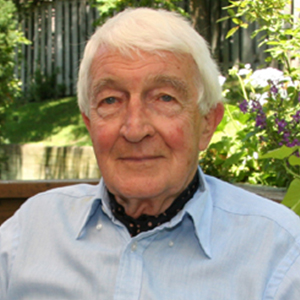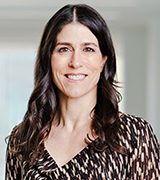CCAA Research
Participant Recruitment
Looking to recruit research participants? Complete the request form to connect with our recruitment team.
Canadian 24-Hour Movement Guidelines
An Integration of Physical Activity, Sedentary Behaviour, and Sleep for Adults 65 Years or Older.
Get more information
Rechnitzer Annual Lecture Series

Peter Rechnitzer, CCAA co-founder
The Rechnitzer Annual lecture is given by an invited speaker who is highly-regarded and recognized nationally and internationally for work in the areas of exercise, well-being and aging. The lecture also provides a platform for bringing together its invited speaker with CCAA’s Research Associates to promote scholarly dialogue and to explore research collaborations in the area of exercise, activity, health, well-being and aging. The lecture recognizes the outstanding contributions of CCAA co-founder Dr. Peter Rechnitzer.
About Peter A. Rechnitzer
Peter Rechnitzer was a practising physician who donated his efforts and expertise to combine research with practical application. He and Professor David Cunningham co-developed the idea for a research centre that focuses on physical activity in people ages 55 to 90 years. He enthusiastically joined with scientists, Professors Cunningham and Donald Paterson, and Nancy Ecclestone to develop the Centre for Activity and Aging.
2025 Rechnitzer Lecture
Exercise for osteoporosis and fall prevention: evidence to action
Dr. Lora Giangregorio, Department of Kinesiology, University of Waterloo
When:
Friday, June 6, 2025
5:00 to 6:00 p.m.
Where:
Online on Zoom or
In-person Elborn College, Rm 1576
What:
Distinguished lecture in-person at Western
Speaker: Lora Giangregorio
 Lora Giangregorio is a Professor and Tier 1 Canada Research Chair in Bone Health and Exercise Science Department of Kinesiology and Health Sciences. She received her doctorate at McMaster University. Her research interests include using medical imaging technologies to evaluate bone strength and muscle size and density in response to intervention after neurologic injury, evaluating the effects of interventions (e.g. exercise) for reducing fracture risk in high risk individuals, and knowledge translation.
Lora Giangregorio is a Professor and Tier 1 Canada Research Chair in Bone Health and Exercise Science Department of Kinesiology and Health Sciences. She received her doctorate at McMaster University. Her research interests include using medical imaging technologies to evaluate bone strength and muscle size and density in response to intervention after neurologic injury, evaluating the effects of interventions (e.g. exercise) for reducing fracture risk in high risk individuals, and knowledge translation.
Presentation Abstract
Fall-related injuries, including fractures, are the number one cause of hospitalization in older adults. Osteoporosis is a bone disease that results in low bone strength, and an increased risk of fractures. Balance, muscle strength, and bone strength decline with age, leading to an increased risk of falls and fall-related injuries, including fractures. Balance and functional training, with or without resistance training, can prevent falls. During this presentation you will learn about what osteoporosis is, and what clinical practice guidelines and other research says about the benefits and harms of balance and functional training, resistance training, and other types of exercise when it comes to fall and fracture prevention. The presentation will also include practical tips on participating in strength and balance training, including ideas for progressing your exercise program, or how to modify it for certain bone or joint concerns.
Webinar Recording & Slide Deck
Exercise for Osteoporosis & Fall Prevention
Lora Giangregorio, Professor and Tier 1 Canada Research Chair in Bone Health and Exercise Science at the University of Waterloo, presents on fall-related injuries—the leading cause of hospitalization in older adults. She will discuss how aging and osteoporosis increase fall and fracture risk, and what research says about the role of exercise in prevention. The session includes practical tips for safely progressing strength and balance training, even with bone or joint concerns.
Explore topics discussed at past Rechnitzer Lectures
2020-2025
Click on presentation title to go to lecture recording in Vimeo
| Year | Lecturer | Title/Topic |
|---|---|---|
| 2025 |
Lora Giangregorio |
Exercise for osteoporosis and fall prevention: evidence to action |
| 2022 |
Juan Murias |
Declines in cardiovascular function with aging: Does this need to be the case? |
| 2021 |
Kevin Shoemaker |
The Brain-Heart Connection: Impact of heart disease and cardiac rehabilitation on brain health. |
| 2020 |
Dr. Jane Thornton |
Health-enhancing Physical Activity: Research Solutions for Lifelong Mobility. |
2010-2019
| Year | Lecturer | Title/Topic |
|---|---|---|
| 2019 |
Dr. Manuel Montero Odasso Dr William McIlroy |
Multidomain Interventions to prevent Dementia. The Synergic Trial. From the Lab to the Clinic and now @Home: Advancing the assessment of balance, mobility and activity in older adults. |
| 2016 | Don Paterson, PhD Western University |
30-years of Exercise and Aging: Prescription for Successful Aging |
| 2015 | Stuart M. Phillips, PhD McMaster University |
A Mantra for Active Aging: Eat Well, Move Lots, Be Strong. Live Long. |
| 2014 | Russell T. Hepple, PhD McGill University |
Golden Oldies: What Elite Octogenarian Athletes Tell Us About Optimal Aging |
| 2013 | David Hood, PhD York University |
Can Exercise Rescue Aging Muscle? |
| 2012 | Lawrence L. Spriet, PhD University of Guelph |
Human Skeletal Muscle: Our Maginificent Energy Producer for Movement and Exercise |
| 2011 | Dr. Edward Lakatta Laboratory of Cardiovascular Science, National Institute of Aging, National Institutes of Health |
Stress of aging viewed from the cardiovascular system |
| 2010 | Judy M. Muller-Delp, PhD Department of Physiology and Functional Genomics University of Florida |
Effects of Age and Exercise on Endothelial Function in Skeletal Muscle: Role of Reactive Oxygen Species |
2000-2009
| Year | Lecturer | Title/Topic |
|---|---|---|
| 2009 | Walter R. Frontera, MD, PhD University of Puerto Rico |
Aging Muscle Fibres and Exercise |
| 2008 | David N. Proctor, PhD Penn State University |
Blood Flow to Exercising Muscles: New Insights to Age-Old Questions |
| 2007 | David C. Poole, PhD Kansas State University |
Muscle Microcirculation in Healthy Aging: Inconvenient Truths |
| 2006 | KE Conley, PhD University of Washington Medical Centre |
Age, Exercise and Adaptation: The Mitochondria Link |
| 2004 | Archie Young, MD University of Edinburgh |
Exercise After 80 |
| 2003 | Kevin K. McCully, PhD University of Georgia |
Evalutating the Role of Oxygen in Skeletal Muscle with Radiofrequencies, Light and Sound |
| 2002 | David A. Cunningham, PhD School of Kinesiology, Western University |
Aging Research: The First 35 Years |
| 2001 | Norman L. Jones, M.D.,F.R.C.P.(London), F.R.C.P.(C) McMaster University |
Sensory Aspects of Exercise in Aging |
| 2000 | Loring B. Rowell, PhD University of Washington Medical Centre |
Why do we Require a Second Heart during Exercise? |
1995-1999
| Year | Lecturer | Title/Topic |
|---|---|---|
| 1999 | Bengt Saltin, M.D. University of Copenhagen |
Mechanisms for Matching Oxygen Delivery to Energy Demands in Contracting Skeletal Muscle |
| 1998 | John A. Faulkner, Ph.D. The University of Michigan |
Muscle Atrophy, Weakness, Fatigue, and Injury: Inevitable Concomitants of Aging |
| 1997 | Brian Whipp, Ph.D. St. George's Hospital Medical School |
Oxygen Utilization and Exercise Tolerance: A 2000 Year Perspective |
| 1996 | Jerome A. Dempsey, Ph.D University of Wisconsin-Madison |
Biological Determinants of Maximal Exercise Performance |
| 1995 | Doug Seals, Ph.D The University of Colorado |
Exercise and Aging: Autonomic and Cardiovascular Adaptations |
